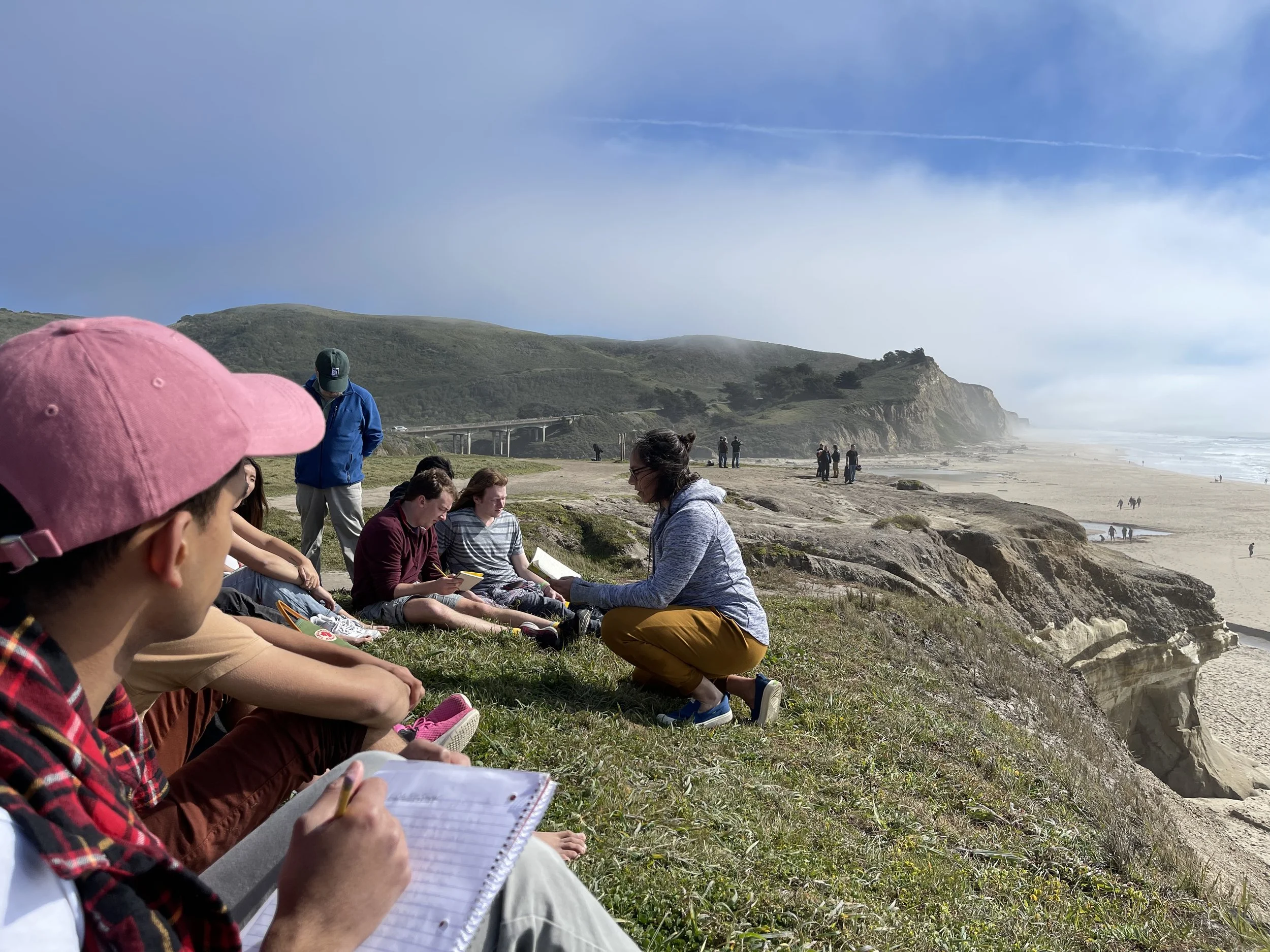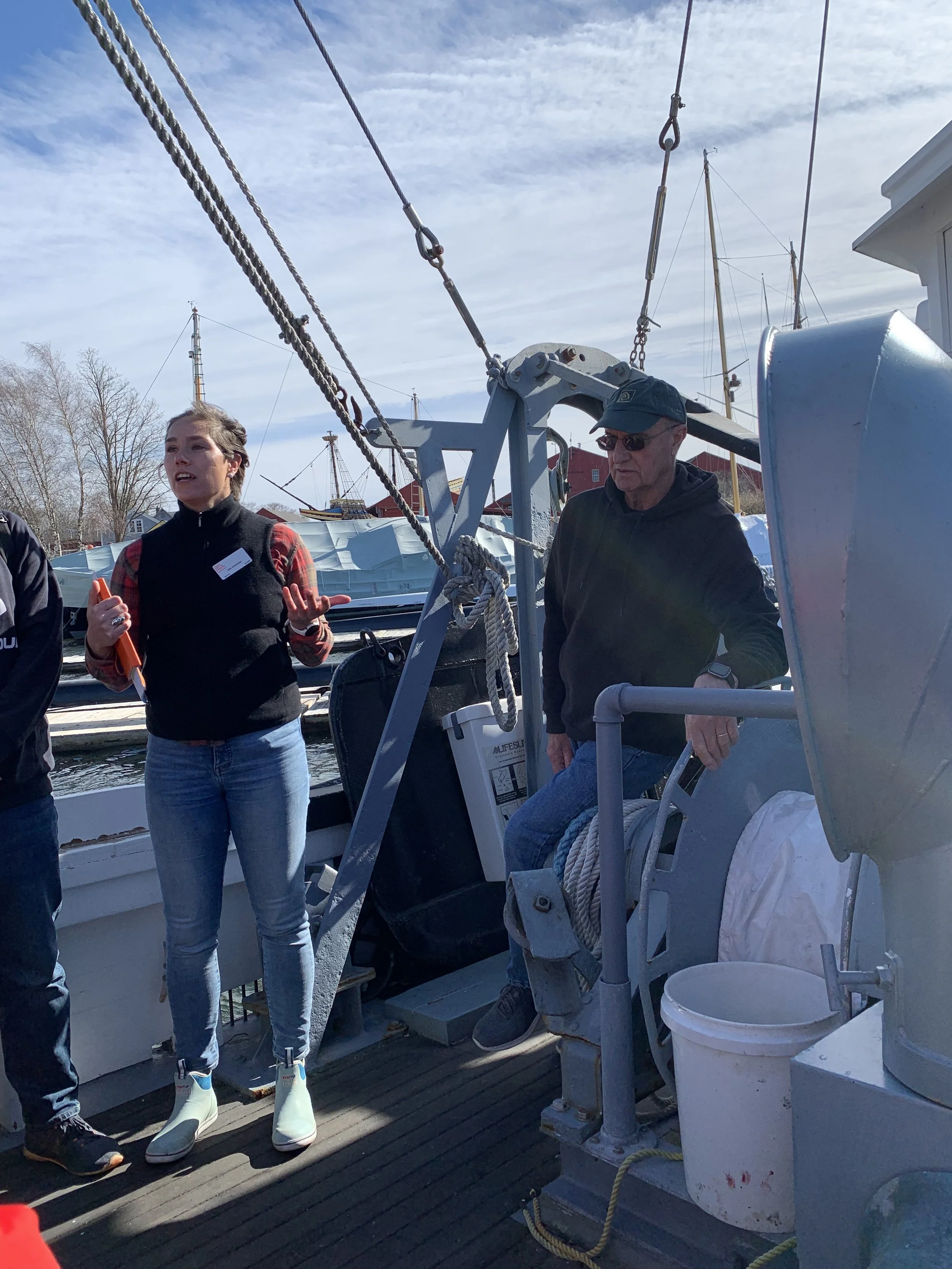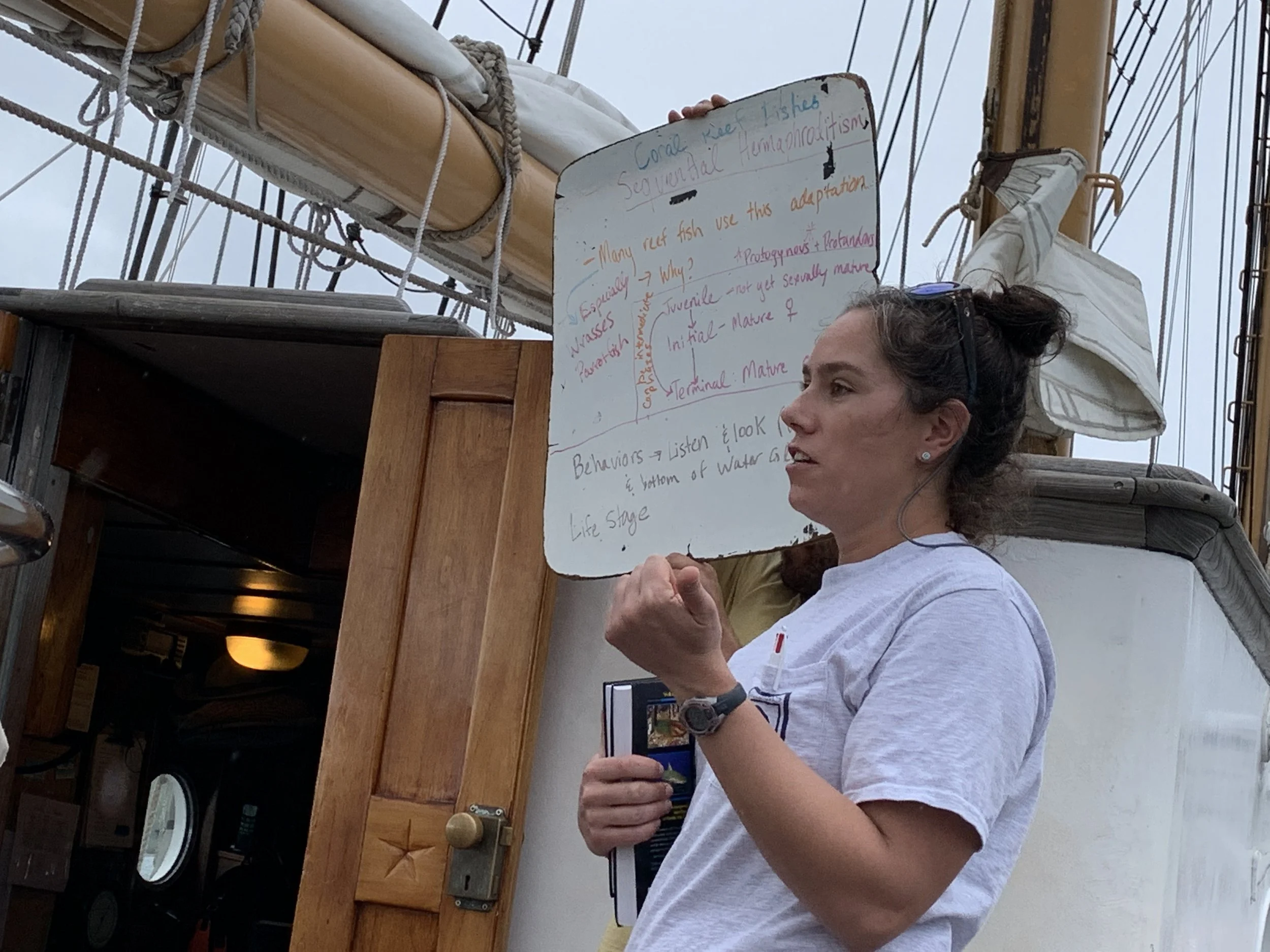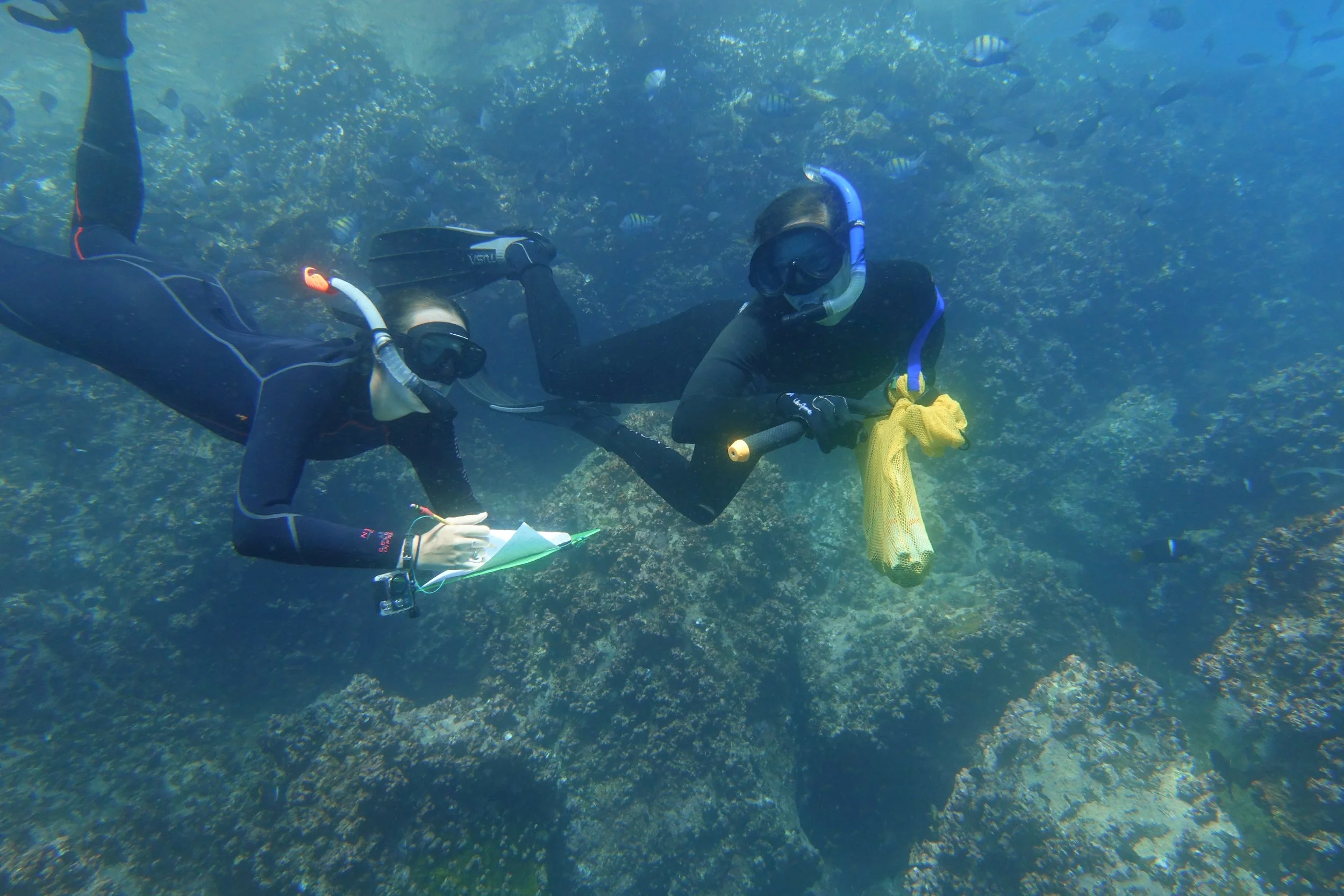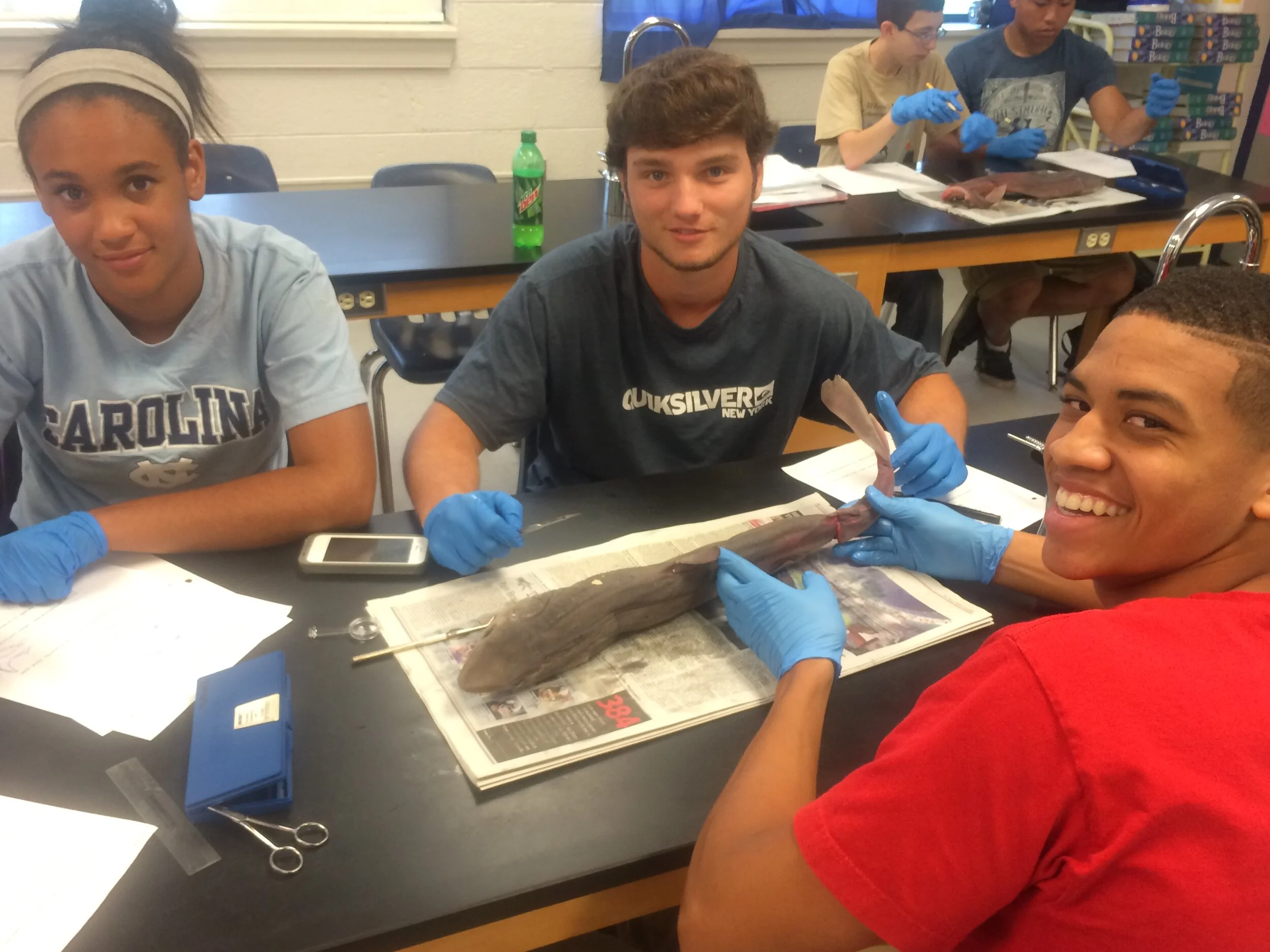
“It is advisable to look from the tide pools to the stars and then back to the tide pool again”—John Steinbeck
Teaching
Regardless of the setting, my goal as an instructor is always to teach with applied and experiential student-led learning at the forefront. I feel strongly that the more students can learn by touching and doing and then connecting those topics to multidisciplinary themes, current affairs, and their own lives the more likely they are to carry lessons with them beyond the classroom.
Marine Ecology at Williams-Mystic
For the Spring Semester of 2022 I was a visiting assistant professor of Marine Ecology at Williams-Mystic, the ocean and coastal studies program of Williams College and the Mystic Seaport Museum. In addition to teaching the fundamentals of marine ecology, my course centered place-based learning, multidisciplinary perspectives, and independent student research. Whether at our home base in Mystic, Connecticut, sailing in St. Croix, or traveling the California or Maine coastlines, students in my Marine Ecology course learned to ask questions, make observations, and understand the ecosystems around them in a powerful way. Hands-on learning approaches not only allow for deeper problem-based learning but they also provide an in depth understanding of what it means to be a scientist and how marine ecosystems are connected to our daily lives.
Williams-Mystic students learn about marine ecology of the Pacific Ocean on a California Field Seminar.
Captain John Rita, a longtime commercial trawler in Stonington, CT talks about his experience to Williams-Mystic students as a fisherman aboard the FV Roann, a wooden trawler active in Stonington’s commercial fleet up until 1998 and now located in Mystic Seaport.
Lela teaching about the ecology of reef fish aboard the SSV Corwith Cramer while sailing around St. Croix with the Williams-Mystic Spring 2022 class.
Additional Teaching Experience
My classroom experience has come from a wide array of practical experiences. As an NSF GK-12 Fellow at a public high school, I learned how to bring marine science into introductory biology classrooms (9th and 10th grades), teach across a wide range of topics for an International Baccalaureate biology course (11th and 12th grades), and invigorate diverse classrooms.
While working as a teaching assistant for graduate and undergraduate classes throughout my graduate studies, I learned how to structure classes and labs and teach students across a variety of majors and backgrounds. I have also had the opportunity to teach in less traditional settings and I loved instructing undergraduate students as the teaching assistant for Marine Ecology of the Galápagos, an intensive field course in the Galápagos as part of the University of Miami’s study abroad program. As a postdoctoral researcher, I sought out opportunities to serve as a guest lecturer on diverse topics for graduate and undergraduate classes at the University of Miami, East Carolina University, York University, Carleton University, Concordia College, and the University of Washington.
Lela shows a University of Miami undergraduate student how to do a fish count while snorkeling at Devil’s Crown in the Galápagos as part of an intensive field course.
As a GK-12 Fellow, Lela helped to teach York High School students hands-on science over the course of a year. Here, these students are learning dogfish anatomy through a dissection activity.
Outreach and Science Communication
Lela helping middle school students observe the heart beat of larval mahi-mahi during Women in Science Day at the University of Miami.
I am committed to fostering diversity in young scientists and making the research environment as accessible, inclusive, and supportive as possible. I am passionate about sharing my love of marine fishes and ocean conservation through classroom teaching, outreach activities, and mentoring.
Outreach and scientific communication are an integral part of exciting and supporting young scientists. I do outreach activities for school groups, fishing tournaments, music festivals, breweries, and have enjoyed doing two Nerd Nite presentations for the general public. Getting folks excited about science is one of the most rewarding parts of being a scientist.
In addition to outreach, being a mentor is a large part of my identity as a scientist. In addition to mentoring undergraduate and graduate students at the University communities I have been a part of, I also mentor students and young professionals as a friend of Minorities in Shark Science (MISS). Mentoring early career scientists helps to demystify the process of making a career in the sciences and importantly, is a direct way to make research more diverse, equitable, and inclusive.
Elementary school groups learn about pop-up satellite tagging mahi-mahi at the University of Miami.
Can you tell a story about your research in 3 minutes with one slide? That was the challenge for the recent East Carolina University PostDoc Flash Talk competition. Lela won “Audience Favorite” for her 3 minute story about what climate change and weather patterns have to do with the shrimp we eat.
Lela posing with the winning angler and her prize mahi-mahi at a fishing tournament in the Florida Keys after a long day of outreach.
